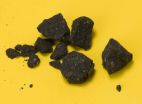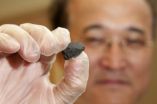(Press-News.org) PHILADELPHIA — The protein kinase Akt is a key regulator of cell growth, proliferation, metabolism, survival, and death. New work on Akt's role in cancer stem cell biology from the lab of senior author Honglin Zhou, MD, PhD and Weihua Li, co-first author, both from the Center for Resuscitation Sciences, Department of Emergency Medicine, Perelman School of Medicine, University of Pennsylvania, and Xiaowei Xu, Department of Pathology and Laboratory Medicine, appears in Molecular Cell. The findings were also highlighted in Nature and Science reviews.
This new research shows that Akt may be the key as to why cancer stem cells are so hard for the body to get rid of. It has been documented that frequent hyperactivation of Akt kinases occurs in many types of human solid tumors and blood malignancies. Prior to this work, Akt was also shown to play a pivotal role in the fate of other types of stem cells, though those cellular mechanisms are still unclear.
"When I came to Penn in 2009, my lab first found that Akt regulates the activity of the protein Oct4," explains Zhou. Oct4 is one of the four transcriptional factors used to generate induced pluripotent stem cells, or iPS cells. In 2006, Kyoto University researcher and Nobel Prize winner Shinya Yamanaka expressed four proteins – Oct 4 was one of the - in mouse somatic cells to rewind their genetic clocks, converting them into embryonic-like iPS cells.
The biochemical experiments outlined in the Molecular Cell paper confirmed that Oct4 interacts directly with Akt and the adding of phosphate molecules to Oct4 by Akt regulates its stability, where it localizes in a cell, and its effect on gene expression. Akt phosphorylating Oct4 has the effect of making Oct4 migrate into the nucleus, where it interacts with other transcription factors and regulates target genes transcription.
The findings were further extended into embryonal carcinoma cells, which are derived from teratocarcinomas and often considered the malignant counterparts to embryonic stem cells (ESCs). The team showed that embryonal carcinoma cells with deregulated Akt activation and more phosphorylated Oct4 are more resistant to cell death signals such as ultraviolet irradiation and high glucose treatment.
Since Akt activation is often deregulated in cancer and Oct4 expression is upregulated in cancer stem cells of various types of cancer, the researchers are studying whether the Akt/Oct4 pathway plays similar roles in other types of cancer stem cells in addition to embryonal carcinoma cells. If true, Akt inhibitor may be developed as a new drug for killing cancer stem cells in cancer therapy.
###
The Molecular Cell work was been done in collaboration with Binghui Shen and Yingjie Wang from Zejiang University in China.
Penn Medicine is one of the world's leading academic medical centers, dedicated to the related missions of medical education, biomedical research, and excellence in patient care. Penn Medicine consists of the Raymond and Ruth Perelman School of Medicine at the University of Pennsylvania (founded in 1765 as the nation's first medical school) and the University of Pennsylvania Health System, which together form a $4.3 billion enterprise.
The Perelman School of Medicine is currently ranked #2 in U.S. News & World Report's survey of research-oriented medical schools. The School is consistently among the nation's top recipients of funding from the National Institutes of Health, with $479.3 million awarded in the 2011 fiscal year.
The University of Pennsylvania Health System's patient care facilities include: The Hospital of the University of Pennsylvania -- recognized as one of the nation's top "Honor Roll" hospitals by U.S. News & World Report; Penn Presbyterian Medical Center; and Pennsylvania Hospital — the nation's first hospital, founded in 1751. Penn Medicine also includes additional patient care facilities and services throughout the Philadelphia region.
Penn Medicine is committed to improving lives and health through a variety of community-based programs and activities. In fiscal year 2011, Penn Medicine provided $854 million to benefit our community.
Protein kinase Akt identified as arbiter of cancer stem cell fate
2012-12-21
ELSE PRESS RELEASES FROM THIS DATE:
Discovery of Africa moth species important for agriculture, controlling invasive plants
2012-12-21
GAINESVILLE, Fla. — In the rain forests of the Congo, where mammals and birds are hunted to near-extinction, an impenetrable sound of buzzing insects blankets the atmosphere.
Because it is a fairly inaccessible region with political unrest, much of the Congo's insect biodiversity remains largely undiscovered. In a new monographic book published this week in Zootaxa, researchers at the University of Florida and the Royal Museum of Central Africa in Belgium provide insect biodiversity information for this area in Central Africa that increasingly undergoes habitat destruction. ...
U of T Researchers uncover major source of evolutionary differences among species
2012-12-21
University of Toronto Faculty of Medicine researchers have uncovered a genetic basis for fundamental differences between humans and other vertebrates that could also help explain why humans are susceptible to diseases not found in other species.
Scientists have wondered why vertebrate species, which look and behave very differently from one another, nevertheless share very similar repertoires of genes. For example, despite obvious physical differences, humans and chimpanzees share a nearly identical set of genes.
The team sequenced and compared the composition of hundreds ...
New meteorite suggests that asteroid surfaces more complex than previously thought
2012-12-21
Meteorites that had fallen from an asteroid impact that lit up the skies over California and Nevada in April are showing scientists just how complex an asteroid surface can be. A new study published in Science this week by an international team of researchers describes the speedy recovery of the meteorites and reports that this space rock is an unusual example from a rare group known as carbonaceous chondrites, which contain some of the oldest material in the solar system. The study of these meteorites and others like them could hold answers to unsolved mysteries about ...
Gift misgivings? Trust your gut
2012-12-21
CHESTNUT HILL, MA (Dec. 20, 2012) – The clock is ticking and you still haven't decided what to get that special someone in your life for the holidays. When it comes to those last-minute gift-buying decisions for family and close friends, intuition may be the best way to think your way through to that perfect gift.
When faced with tough decisions, some people like to "trust their gut" and go with their intuition. Others prefer to take an analytical approach.
Boston College Professor Michael G. Pratt, an expert in organizational psychology, says new research shows intuition ...
Meteorite triggered scientific gold rush
2012-12-21
A meteorite that exploded as a fireball over California's Sierra foothills this past spring was among the fastest, rarest meteorites known to have hit the Earth, and it traveled a highly eccentric orbital route to get here.
An international team of scientists presents these and other findings in a study published Friday, Dec. 21, in the journal Science. The 70-member team included nine researchers from UC Davis, along with scientists from the SETI Institute, NASA and other institutions.
The researchers found that the meteorite that fell over Northern California on April ...
Engineers seek ways to convert methane into useful chemicals
2012-12-21
Little more than a decade ago, the United States imported much of its natural gas. Today, the nation is tapping into its own natural gas reserves and producing enough to support most of its current needs for heating and power generation, and is beginning to export natural gas to other countries.
The trend is expected to continue, as new methods are developed to extract natural gas from vast unrecovered reserves embedded in shale. Natural gas can be used to generate electricity, and it burns cleaner than coal.
"With petroleum reserves in decline, natural gas production ...
Clays on Mars: More plentiful than expected
2012-12-21
A new study co-authored by the Georgia Institute of Technology indicates that clay minerals, rocks that usually form when water is present for long periods of time, cover a larger portion of Mars than previously thought. In fact, Assistant Professor James Wray and the research team say clays were in some of the rocks studied by Opportunity when it landed at Eagle crater in 2004. The rover only detected acidic sulfates and has since driven about 22 miles to Endeavour Crater, an area of the planet Wray pinpointed for clays in 2009.
The study is published online in the ...
Lifestyle changes linked to better outcomes after peripheral intervention
2012-12-21
ANN ARBOR, Mich. – Patients who quit smoking and took an aspirin and statin before undergoing treatment for blocked leg arteries were less likely to suffer a complication six months later, according to new research led by the University of Michigan Cardiovascular Center.
But few patients made the lifestyle changes and were on recommended medical therapy that can relieve leg pain and cramping associated with peripheral arterial disease, or PAD.
The registry findings were published online ahead of print in Circulation: Cardiovascular Interventions and reveal a dramatic ...
Study shows heart calcium scan predictive of diabetes-related death from cardiovascular disease
2012-12-21
WINSTON-SALEM, N.C. – Dec. 20, 2012 – People with Type 2 diabetes have two to four times the risk of cardiovascular disease compared to people without the disease. The best way for doctors to predict which diabetes patients are at the greatest risk for heart disease is to use a coronary artery calcium (CAC) test in addition to the most commonly used assessment tool, according to researchers at Wake Forest Baptist Medical Center.
Current medical guidelines recommend treating all diabetes patients as high risk, but the Wake Forest Baptist study found that CAC can identify ...
Scripps Florida scientists create new approach to destroy disease-associated RNAs in cells
2012-12-21
JUPITER, FL, December 20, 2012 – Scientists from the Florida campus of The Scripps Research Institute (TSRI) have developed a new approach to alter the function of RNA in living cells by designing molecules that recognize and disable RNA targets. As a proof of principle, in the new study the team designed a molecule that disabled the RNA causing myotonic dystrophy.
The study, published online ahead of print on December 20, 2012 by the journal Angewandte Chemie, reports the creation of small molecules that recognize disease-associated RNAs, targeting them for destruction. ...


